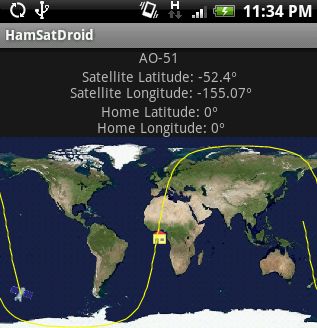Amsat NA har nu säkrat en uppskjutning åt sin nya satellit FOX-1.
Följande finns att läsa i nedanstående nyhetsbrev.
Project ELaNa, NASA’s “Educational Launch of NanoSat” managed by the
Launch Services Program at the Kennedy Space Center, announced on
February 10 that the AMSAT Fox-1 cubesat has been selected to join
the program.
NASA will work with AMSAT in a collaborative agreement where NASA
will cover the integration and launch costs of satellites deemed to
have merit in support of their strategic and educational goals.
Watch for full details to be published in the AMSAT Journal.
AMSAT teamed with the ARRL to write and deliver the 159 page educa-
tional proposal to NASA. Letters documenting the importance of AMSAT’s
satellites in the education programs at the ARRL and also at the Clay
Center for Science and Technology at the Dexter and Southfield schools
in Brookline, MA, were important parts of our proposal.
AMSAT President Barry Baines, WD4ASW said, “The ELaNA Launch oppor-
tunity marks AMSAT’s return to space after the conclusion of the
successful ARISSat-1/KEDR flight. We need to get the flight Fox-1,
along with an operational flight backup satellite, built, integrat-
ed, tested, and delivered. Our ability to provide a spacecraft and
get it launched is dependent upon the active support of our donors
who wish to see Fox-1 fly.”
AMSAT Vice-President of Engineering, Tony Monteiro, AA2TX noted this
will provide a launch opportunity for AMSAT’s next generation of FM
repeater satellites with features and operation beyond the experience
of AO-51. AMSAT’s Fox-1 Engineering Team is making progress developing
the advanced satellite that will provide these features:
+ Fox-1 is designed to operate in sunlight without batteries once
the battery system fails. This applies lessons learned from AO-51
and ARISSat-1 operations.
+ In case of IHU failure Fox-1 will continue to operate its FM
repeater in a basic, ‘zombie sat’ mode, so that the repeater
remains on-the-air.
+ Fox-1 is designed as the immediate replacement for AO-51. Its U/V
(Mode B) transponder will make it even easier to work with modest
equipment.
+ From the ground user’s perspective, the same FM amateur radio
equipment used for AO-51 may be used for Fox-1.
+ Extending the design, Fox-2 will benefit from the development work
of Fox-1 by adding more sophisticated power management and Software
Defined Transponder (SDX) communications systems.
The Fox-1 Project presents an opportunity to literally put your call-
sign on the Fox hardware. AMSAT is looking for major donations to help
underwrite the cost of solar cells/panels, one of the more significant
expenses of the project.
These solar cells are needed for the flight unit as well as for the a
flight spare. As Fox-1 will have solar cells on all six sides of the
spacecraft and given the relatively small surface area available on
each side (at most 4″ by 4″ per side), AMSAT needs to invest in high
efficiency solar cells to gain as much power as possible to operate
the spacecraft.
Several opportunities to make your donation to keep amateur radio in
space include:
+ Return the form sent with the letter to reply with your donation
for the Fox-1 Project.
– All donations over $40 will receive a Fox pin.
– Donations of $120 or more qualify you for AMSAT President’s Club
+ Call Martha at the AMSAT Office +1-888-FB AMSAT (1-888-322-6728)
+ Paypal donation widget on the main page at: http://www.amsat.org
+ Paypal donation widget for Project Fox at:
http://www.amsat.org/amsat-new/fox/
+ You can also go to the Paypal site and send your donation to
martha@amsat.org.
+ The AMSAT Store: http://www.amsat-na.com/store/categories.php
Project Fox web site provide a good overview of the technical progress
of the new satellite: http://www.amsat.org/amsat-new/fox/




